It’s long been said that everything is bigger in Texas, and ports of the Lone Star State seem to be applying this trope to their facilities as they aggressively pursue bigger and better facilities for handling greater volumes of diverse cargos, from liquid bulk to containerized goods.
Not only are Texas port terminals themselves expanding, but also, in a number of cases, initiatives are afoot to deepen the ship channels that serve them, including in order to accommodate increasingly large oil tankers.
Port of Port Arthur
Federal grant funds could not be coming to the Port of Port Arthur at a better time, as the port’s region continues to recover from the devastation exacted in August 2017 by Hurricane Harvey.

This past December, the Port of Port Arthur was awarded $20 million through the U.S. Department of Transportation’s Better Utilizing Investments to Leverage Development, or BUILD, competitive grant program, to help advance a $55 million project to construct Berth 6 with a 1,000-foot-long wharf and related infrastructure. A separate $4.8 million grant, from the U.S. Economic Development Administration, in support of storm recovery, is to be used to upgrade rail, roadway and storm drainage infrastructure. The drainage improvements should boost the port’s resiliency in the event of future storms.
The Port of Port Arthur is seeing sustained growth in tonnage of forest products and military and project cargos, while its International Longshoremen’s Association workforce saw a 30 percent increase in man-hours in 2018 compared with 2017. Over the past two years, the port has entered the liquid energy realm as well, further diversifying its cargo base.
Port of Beaumont
A $695 million capital improvement program in place for the current fiscal year encompasses 20 projects at the Port of Beaumont, which is teaming with private industry to expand capabilities. The most significant undertaking, the $79 million construction of Main Street Terminal 1, is adding a new dock that portends to increase the port’s general cargo-handling capacity by 25 percent, or nearly 1 million additional tons a year, providing particular benefits to the U.S. Army’s 842nd Transportation Battalion at the longstanding No. 1 U.S. strategic military port.
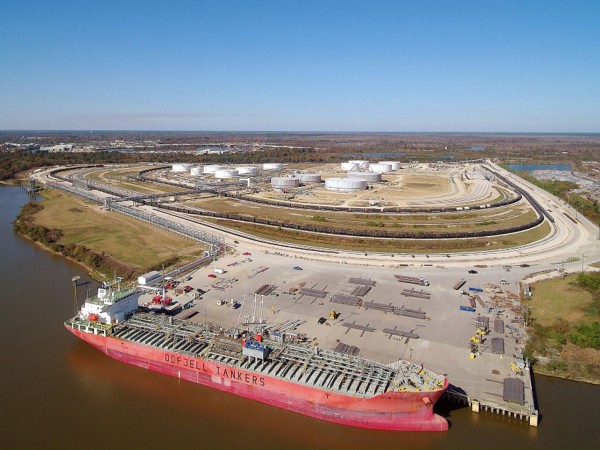
Other projects under way include construction of an overpass and addition of a second rail interchange track, which should combine to double the Port of Beaumont’s rail-handling capacity while alleviating congestion.
With tonnage having nearly tripled over the past 12 months at the Port of Beaumont’s liquid bulk terminal, operator Jefferson Energy Companies is spearheading expansion efforts, including construction of a third berth and additional storage tanks. Another port partner, Allegiant Industrial Island Park LLC, is working with the port to advance $30 million in upgrades at a 75-acre fabrication and paint facility.
Port Houston
More than $1 billion is slated to be invested over the next several years in expansion and improvement projects at Port Houston, the longtime No. 1 U.S. foreign tonnage port, where channels fronting major container terminals have been deepened to 45 feet. Officials reported total tonnage moving through Port Houston facilities in calendar 2018 at a record 35.7 million tons, up 9 percent over 2017 volume. The past year also saw moves of an all-time-high 2.7 million twenty-foot-equivalent units of containerized cargo – evenly balanced between imports and exports – representing a 10 percent gain over 2017.
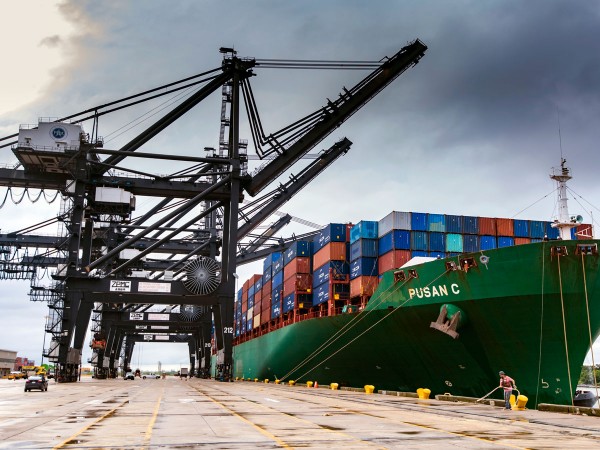
An investment of $350 million over the next decade is planned for Port Houston’s venerable Barbours Cut Container Terminal as part of an ongoing modernization process that has seen deliveries of seven new super-post-Panamax wharf cranes since late 2015.
At the Bayport Container Terminal, which opened in 2007, three additional super-post-Panamax cranes were delivered in August 2018 and build-out continues based upon demand. Container laydown areas are being constructed to increase storage capacity, while additional container yard and wharf expansion projects also are under way.
Port of Texas City
About 40 miles toward the Gulf of Mexico from Port Houston, the energy-focused Port of Texas City, which ranks among the 15 busiest U.S. ports in terms of total tonnage handled, is taking a leadership role in the loading of very large crude carriers, or VLCCs.
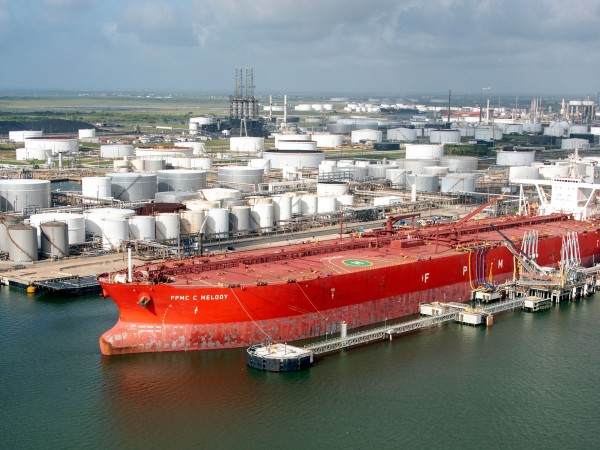
Since the initial VLCC export loading in mid-2018 of the FPMC C Melody, the port has handled a dozen such supertankers with more on the way to transport international shipments, mostly to Asia, of crude oil from prolific Texas energy plays, including the Permian Basin and Eagle Ford, as well as Cushing, Oklahoma.
The Texas City terminal of Seaway Crude Pipeline Co. LLC, a joint venture between affiliates of Enterprise Products Partners LP and Enbridge Inc., while built four decades ago, is able to accommodate the 1,100-foot-long VLCCs in a cooperative effort with the Galveston-Texas City Pilots. The supertankers have capacities of as many as 2 million barrels of crude apiece, and the 45-foot draft along Texas City berthing allows the VLCCs to each be loaded with a little more than 1 million barrels.
Port of Galveston
In addition to being the fourth-busiest U.S. cruise port, with a record 1.97 million passenger movements in 2018, the Port of Galveston is taking on growing volumes of a diverse mix of cargos. The port’s 21 percent year-over-year increase in total cargo tonnage, to 4.4 million short tons in 2018, was largely attributable to greater handlings of bulk commodities, led by a rebound in fertilizer imports, as well as liquid cargos, while export grain tonnage rose 14 percent. Gains also were reported in roll-on/roll-off activity, up 22 percent, and refrigerated produce imports, up 13 percent.
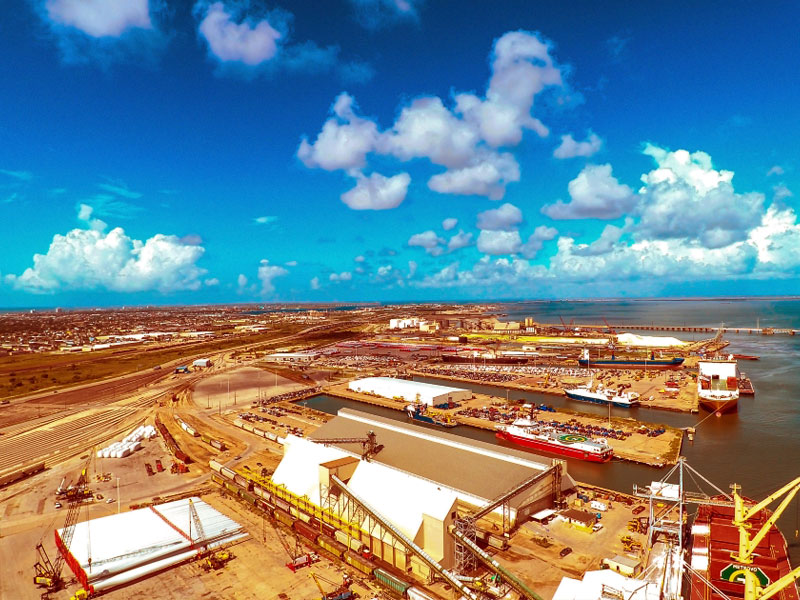
Wind turbines and towers and related project cargos also are on the upswing at the Port of Galveston, which, in conjunction with BNSF Railway Co. and short line operator Galveston Railroad LP, offers unit train capabilities for efficiently and cost-effectively getting the overdimensional units to wind farms in four states.
To help set the course for the next four decades, the Port of Galveston recently hired Miami-based Bermello Ajamil & Partners Inc. to develop a strategic master plan in concert with port staff and stakeholders.
Port Freeport
On the Gulf Coast about 70 miles south of Houston, Port Freeport is on the verge of having its channel brought to as many as 56 feet at mean lower low water, making it the deepest Texas port. May 2018 voter approval of a $130 million bond package sets the stage, along with federal funding and favorable U.S. Army Corps of Engineers reports, for the $295 million harbor project to proceed. Construction of the deeper, wider channel could begin by yearend.
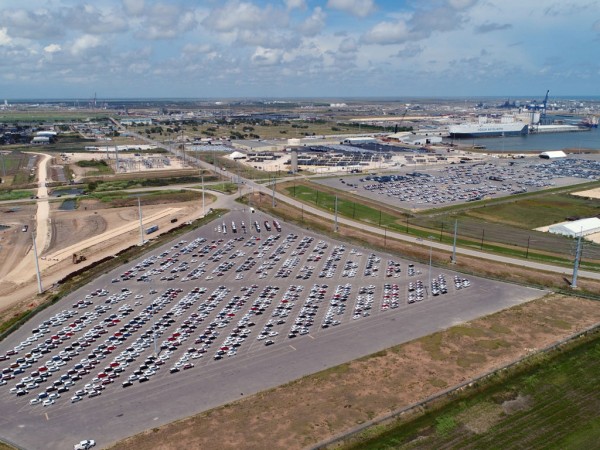
Set to enter service this summer are new intermodal rail facilities to offer Port Freeport users manifest and unit train service by Union Pacific Railroad and support warehousing, packaging and distribution at a 240-acre industrial park adjoining the port’s growing container-handling facility, which is targeted to get another 1,600 feet of berthing plus as many as five additional post-Panamax gantries.
Diverse activities at Port Freeport include handling vehicles via roll-on/roll-off vessels, banana and steel imports, and shipments from an on-port rice milling operation. In addition, Freeport LNG is to begin exporting this year from its liquefied natural gas facility.
Calhoun Port Authority
Some 90 miles farther down the Texas coast, the Calhoun Port Authority, formerly marketed as the Port of Port Lavaca-Point Comfort, is seeing progress on multiple fronts related to liquid bulk and petrochemicals.
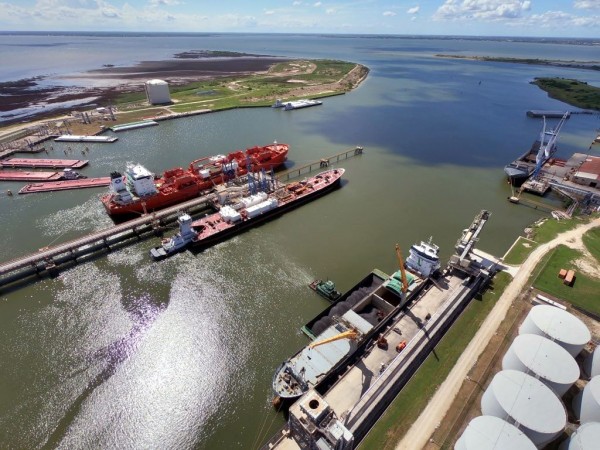
Design has been completed for the port’s South Peninsula development, which is to bring Calhoun Port three more deepwater liquid product berths with capacity for six loading arms apiece for handling a wide spectrum of bulk liquids. The plan includes two brownwater barge berths at each deepwater berth. Construction is anticipated to begin in the fourth quarter of this year. Also, the U.S. Army Corps of Engineers is in final stages of completing a pair of studies – one looking at deepening and widening the Matagorda Ship Channel to accept larger tankers handling crude oil and condensate and the other addressing issues with jetty design and construction.
On the private industry side, Formosa Plastics Corp. USA, which operates a 2,500-acre petrochemical complex at Point Comfort, plans to award by midyear a design-build contract for pipelines and five loading arms to handle products from a new ethylene glycol plant.
Port of Corpus Christi
Another 90 miles closer to the U.S.-Mexico border along the Gulf Coast, the Port of Corpus Christi is advancing a plan to deepen its ship channel to 54 feet mean lower low water by 2022. The project saw its first dredging contract awarded in January, and in March the undertaking was included for a second year in the president’s U.S. Army Corps of Engineers budget. Along with a taller bridge to be built over the port’s Inner Harbor entrance, replacing a half-century-old span, the deeper channel should clear access for even larger supertankers.
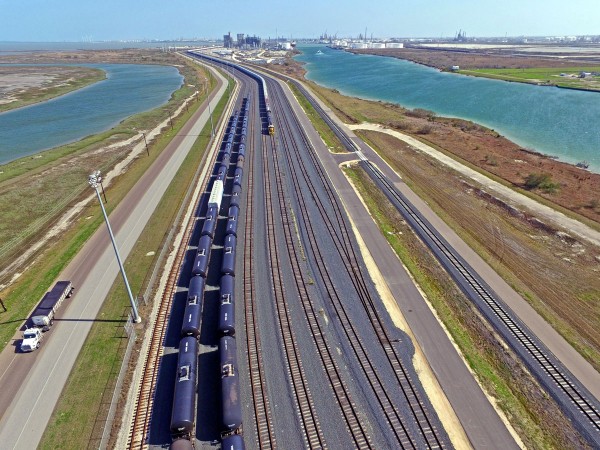
In addition, the Port of Corpus Christi and The Carlyle Group entered into an agreement for development on the port’s Harbor Island property of what officials say bodes to be the first onshore location in the United States capable of being served by fully laden VLCCs, thus furthering the port’s status as No. 1 U.S. port for crude oil exports.
Meanwhile, the recently completed second phase of the port’s Nueces River Rail Yard offers capabilities for making unit trains to proficiently carry a broad range of commodities.
Port of Brownsville
Handling a record 11.6 million short tons of cargo last year, the Port of Brownsville continues benefiting from its location just north of Mexico.
More than 60 percent of Port of Brownsville revenues come through movement of refined petroleum products as the port plays a role in compensating for Mexican refinery shortfalls. Also, raw and refined sugar move between the port and Mexico, while Mexican limestone arrives for Texas construction projects. The port’s steel shipments to Mexico are surging, projected to reach as many as 5 million metric tons by 2021, up from 3 million tons in 2018.
The port is completing dredging to 50 feet along a new liquid bulk dock set for midyear dedication, while broader plans call for lowering overall channel depth to 52 feet. Three multibillion-dollar LNG liquefaction projects augur to generate project cargo and jobs, and Big River Steel is in due diligence on a planned $1.6 billion electric arc mill at the port. Wind blade manufacturer TPI Composites Inc. is opening two plants across the border in Matamoros, boding to augment wind energy shipments.





